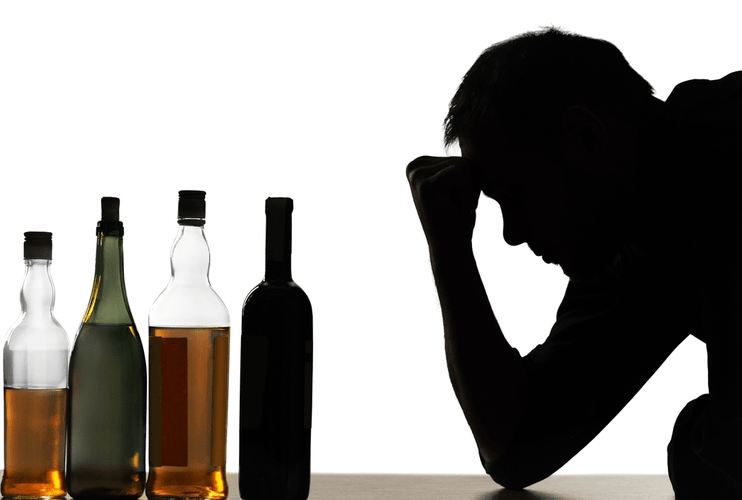Patients who suffer from alcohol use disorders (AUDs) usually go through various socio-behavioral and pathophysiological changes that take place in the brain and other organs. Recently, consumption of unhealthy food and excess alcohol along with a sedentary lifestyle has become a norm in both developed and developing countries. Despite the beneficial effects of https://en.forexdata.info/the-most-common-causes-of-bruising-after-drinking/ moderate alcohol consumption, chronic and/or excessive alcohol intake is reported to negatively affect the brain, liver and other organs, resulting in cell death, organ damage/failure and death. The most effective therapy for alcoholism and alcohol related comorbidities is alcohol abstinence, however, chronic alcoholic patients cannot stop drinking alcohol.
The opioid cash comes from more than a dozen drugmakers, pharmaceutical distributors, and retail pharmacies that have agreed to pay more than $50 billion over 18 years in legal settlements intended to resolve their roles in the opioid addiction crisis. The companies — including CVS, Johnson & Johnson, AmerisourceBergen and Cardinal Health — were accused of downplaying the risks of prescription opioids and Step 1 of AA: Admitting You’re Powerless Over Alcohol fueling the first wave of the crisis. So, I told my friends that I was having the surgery, and I had my husband pick me up after the procedures. He also picked up my prescription — only a few days’ supply, which is another useful precaution. If I’d had cravings, I would have asked him to hold them for me, as experts recommend. For those in 12-step recovery, more support from a sponsor is also suggested.
FDA-Approved Medications for Alcoholism
Instead, it is produced by the leading U.S. agency for scientific research on alcohol and health, the National Institute on Alcohol Abuse and Alcoholism (NIAAA). We do not receive any commission or fee that is dependent upon which treatment provider a caller chooses. Disulfiram cannot be started until 12 hours after abstaining from alcohol or until your blood alcohol concentration level is zero. If you are on disulfiram, you may be monitored with tests such as those for breath or blood alcohol, and liver function. Group therapy, led by a therapist, can give you the benefits of therapy along with the support of other members. Group therapy or a support group can help during rehab and help you stay on track as life gets back to normal.
- ABT-436 treatment reduced serum cortisol levels, however, no pharmacokinetic or pharmacodynamic interactions between ABT-436 and alcohol have been reported (Katz et al., 2016).
- When a person addicted to alcohol quits drinking, the brain craves the substance.
- It’s available in oral form (taken 3 times daily).7 Acamprosate appears to be most effective in achieving complete sobriety from alcohol versus simply reducing how much alcohol is consumed.
- “If you don’t like taking pills, you already take too many pills, or you aren’t good at remembering to take pills, then this would be a tricky one,” he says.
The general consensus among scientists and health care professionals is that there is a strong neurobiological and genetic basis for addiction. Cognitive behavioural therapy (CBT) is a talking therapy that uses a problem-solving approach to alcohol dependence. When taking disulfiram, you’ll be seen by your healthcare team about once every 2 weeks for the first 2 months, and then every month for the following 4 months. You’ll continue to experience unpleasant reactions if you come into contact with alcohol for a week after you finish taking disulfiram, so it’s important to maintain your abstinence during this time. Acamprosate works by affecting levels of a chemical in the brain called gamma-amino-butyric acid (GABA). GABA is thought to be partly responsible for inducing a craving for alcohol.
Alcoholism Aftercare and Long-Term Health
Fortunately, my primary dentist, Dr. Dennis Bohlin, is himself in recovery, and was able to help me navigate these risks. There is much misinformation about how opioid pain treatment affects people in recovery and those at high risk of addiction. Understanding how psychoactive drugs and addictions really work is crucial for better managing medical opioid use — and ending policies that interfere with both prevention and recovery. Before he came around to the concept of using ultrasound for addiction treatment, Rezai started with the notion that he might be able to adapt technology used to treat Parkinson’s disease to help treat people with severe drug addiction.
- These three alcohol medications come in pill form, and naltrexone also comes in injectable form.
- Your withdrawal symptoms will be at their worst for the first 48 hours.
- It is believed that the main reason the Sinclair Method has not caught on in the U.S. is two-fold.
- Subjects with no HDDs during treatment fared better than those with some HDDs on drinking outcomes and alcohol-related consequences (Falk et al., 2010).
- Disulfiram cannot be started until 12 hours after abstaining from alcohol or until your blood alcohol concentration level is zero.
Medications used are evidence-based treatment options and do not just substitute one drug for another. In the 1980s, animal studies discovered that naltrexone also reduced alcohol consumption. These showed that when combined with psychosocial therapy, naltrexone could reduce alcohol cravings and decrease relapse rates in alcoholics. Quetiapine was evaluated in another randomized, double-blind, placebo-controlled trial of patients with bipolar disorder, depression and alcohol dependence. These data suggest that, despite quetiapine showing promising results in preliminary human studies, it was not effective in a single site (Monnelly et al., 2004; Martinotti et al., 2008) and multisite RCT (Litten et al., 2012; Litten et al., 2016). Some medications can help patients quit drinking, treat alcohol withdrawal symptoms (as mentioned above), and prevent relapse.
Medications to Curb Alcohol Cravings
Baltieri et al, conducted a comparative study of topiramate and naltrexone for the treatment of alcohol dependence. In a 12-week, double-blind, placebo-controlled trial, patients received either topiramate (300 mg/day), naltrexone (50 mg/day), or placebo. Similarly, topiramate and naltrexone were evaluated for percent of subjects with no heavy drinking days (PSNHDDs) in two large alcohol clinical trials, namely COMBINE and a multi-site topiramate trial. In these trials, PSNHDDs and other traditional end points were drawn for topiramate, naltrexone, acamprosate and placebo groups.
The following medications are in different phases of clinical trials and have a great potential for the treatment of the AUD (Figure -2). FDA has approved several different medications to treat alcohol use disorders (AUD) and opioid use disorders (OUD). These medications relieve the withdrawal symptoms and psychological cravings that cause chemical imbalances in the body.
After My Heroin Addiction, Would Pain Medicine Set Me Back?
Thirty five subjects with co-morbid alcohol dependence and MDD were recruited in this study and divided into two groups. One received AR I+ escitalopram (ARI 5–15mg + escitalopram 10–20mg/day for 6 weeks) and other escitalopram alone. Both escitalopram alone and ARI + escitalopram group were shown to reduce Beck Depression Inventory and clinical global index-severity (CGI-S) scores, however, reduced alcohol craving in ARI + escitalopram group. These findings suggest that the effects of ARI on anterior cingulate cortex might mediate the successful treatment of alcohol dependence in patients with MDD (Han et al., 2013).

It’s usually used in combination with counselling to reduce alcohol craving. Your withdrawal symptoms will be at their worst for the first 48 hours. They should gradually start to improve as your body begins to adjust to being without alcohol.
The treatment options for alcohol misuse depend on the extent of your drinking and whether you’re trying to drink less (moderation) or give up drinking completely (abstinence). In addition to in-person options, you can access alcohol treatment
through telehealth services and other online options. Learn how to find quality care
for yourself or a loved one or for patients or clients.

